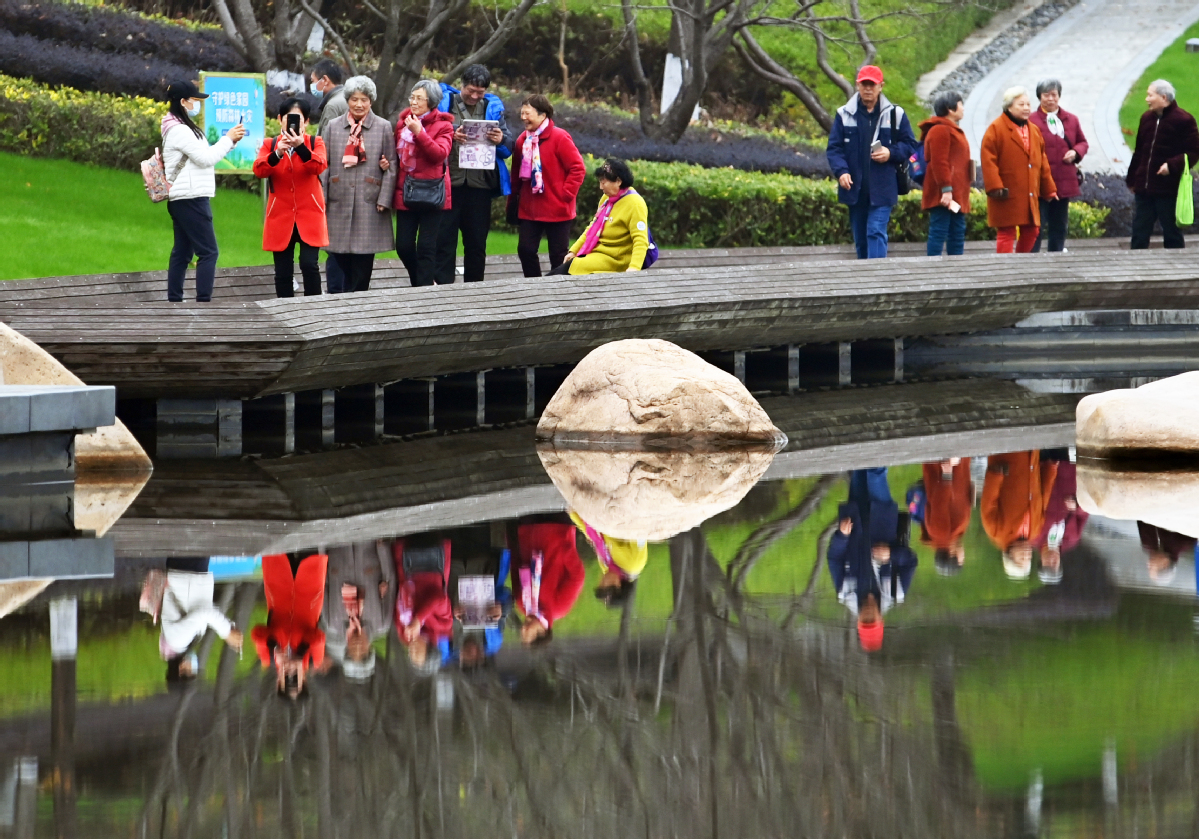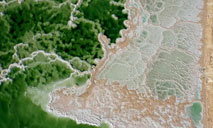Rise of knowledge- and tech-intensive society (2)
Senior tourists visit a scenic spot in Hangzhou, Zhejiang province. Middle-aged and elderly consumers are expected to spend more than $109 billion on travel this year. [Photo by Yang Bo/For China Daily]
Yet, the tourism market still lacks enough travel products that are particularly designed for middle-aged and elderly travelers, but more operators are increasing investments in the segment.
This year, middle-aged and elderly consumers are expected to spend more than 700 billion yuan ($109.3 billion) on travel, and the average compound annual growth rate of the past five years is predicted to reach 23 percent, according to Guangzhou-based consultancy iiMedia Research.
Tuniu Corp, an online travel agency based in Nanjing, Jiangsu province, said it has placed great emphasis on the development of the elderly travel market. In 2016, the company launched an independent brand that focuses on the elderly travel business. Now, the brand has more than 100 routes customized for elderly travelers.
One such custom product is red tours, which have added significance this year that marks the centenary of the founding of the Communist Party of China. Tuniu said it has selected representative "red tourism" spots and other popular places of interest in Jiangxi province and other regions, and designed special red tourism routes to meet the demand of patriotic elderly people who display a willingness to travel.
"For those routes designed for elderly travelers, destinations are mainly safe places with balmy weather. The schedules are mostly slow-paced, and elderly travelers won't feel overly tired," said Wang Shubai, vice-president of Tuniu Corp.
"Next, Tuniu will offer more detailed travel products to satisfy different demands for social, photography and healthcare activities of middle-aged and elderly travelers. We will launch more high-quality products and provide better tour guide services," Wang said.
With the COVID-19 pandemic being increasingly brought under control in China, a large number of elderly travelers took trips before or after the Labor Day holiday in May to stagger the travel peak period.
So far this year, Hainan province and Beijing emerged the most popular destinations for elderly travelers, and the booking volumes for the two places accounted for nearly 50 percent of the total orders among elderly travelers. Besides, more than 85 percent of elderly travelers chose to take trips that last for more than five days, according to Tuniu.
Meanwhile, industry experts said China should continue to increase the supply of innovative and tailored elderly care services for elderly consumers.
As people age, they often face eye problems like presbyopia and cataracts, which require eye care products and solutions. In China, 92 percent of those aged 40 and above have vision difficulties, according to a survey of Ipsos, a global market research institute.
Presbyopia is a natural condition related to aging, just like gray hair. With the widespread use of the internet, and with online working becoming increasingly common, the increasing incidence of eyestrain has led to more visual problems.
 |  |
Photos
Related Stories
- China’s aging population a new gold mine for economy
- Elderly-friendly center in Shanghai creates novel plans to cope with the aging population
- HK to set up neuroscience research center with world's top universities to tackle aging population
- Aging population brings business for travel sector
- China’s aging population to reach peak of 400 million by 2055
Copyright © 2021 People's Daily Online. All Rights Reserved.











